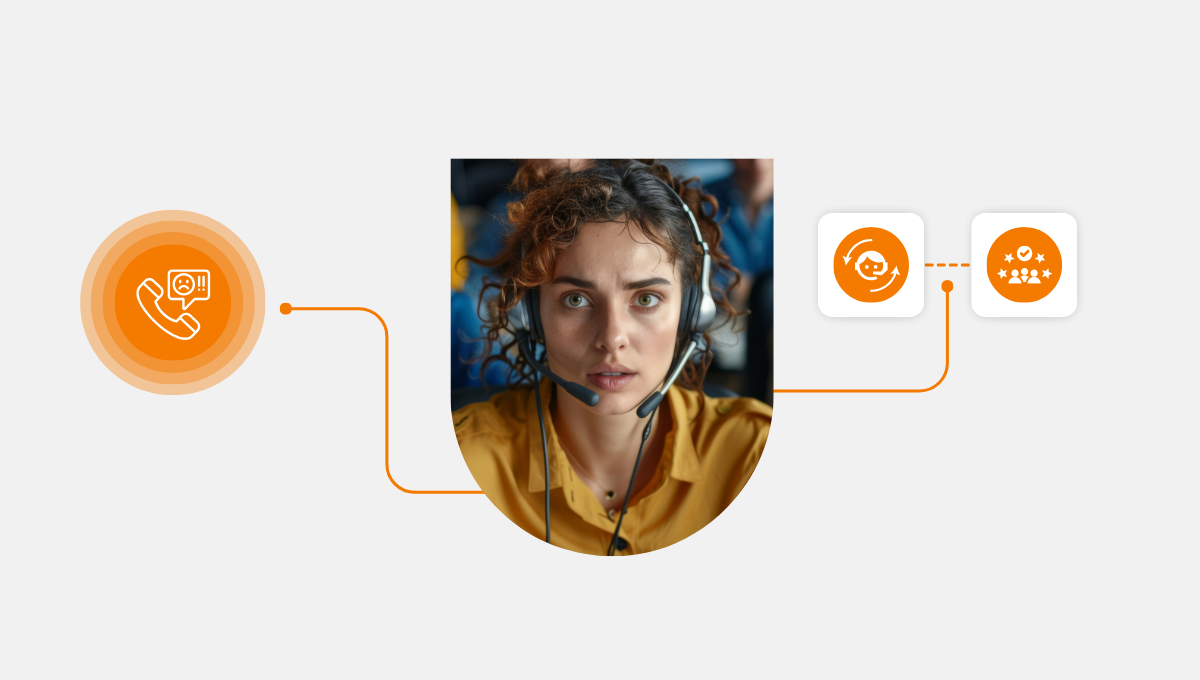Marketers using three or more channels in a campaign have a 287% higher purchase rate than those using a single-channel approach.
Your company needs to offer the omnichannel experience, the gold standard for delivering seamless, consistent, and personalized customer service across all communication touchpoints.
If you’re still piecing together your CX strategy with duct tape and siloed systems, this article is your wake-up call.☎️
What Is an Omnichannel Customer Experience?
An omnichannel experience means customers can interact with your brand through any channel:
- WhatsApp—Telegram— Messenger
- Sms,
- Email,
- Live chat,
- Social media,
Even in person—and get a consistent, unified experience.
It’s not just about being available everywhere; it’s about stitching those channels together.
Whether your customer starts a conversation on Twitter, continues it on email, and ends it via phone, the context should follow them. So customers aren’t treated like strangers every time they switch platforms.
Visit Call Center Studios Omnichannel Contact Center to step into your omnichannel strategy.
Book your free demo to see how it works.

Seamless Interactions
FACT: 71% of consumers expect companies to deliver personalized interactions, and 76% get frustrated when this doesn’t happen. People want companies to know what’s going on. Painful and wild but true.
Imagine ordering a couch online.
- You confirm the delivery date through the website chat.
- A week later, you call to change the delivery time.
- The agent asks for your order number, which you give—for the fifth time.
They have no record of your chat conversation, and you’re stuck explaining it all over again. By the end, you’re ready to sit on the floor forever.
Seamless interactions mean that your couch convo from chat is available when the customer calls. Or emails. Or DM you on Instagram because they gave up on email.
It’s the difference between a customer who feels known and one who feels lost in your brand’s internal chaos.
Why Personalization Isn’t Just a Buzzword
FACT: Omnichannel shoppers have a 30% higher lifetime value than those who shop using only one channel. Forget generic. Go specific. Use data wisely and make the experience feel made for them.
Personalization isn’t about slapping someone’s first name on an email and calling it a day.
In an omnichannel communication, personalization means tailoring the journey to match behavior, preferences, and context—regardless of platform.
Say you’re browsing laptops on a retailer’s mobile app.
- You get an email with a discount code for the exact model you viewed.
- Next time you walk into their store, a rep can pull up your recent activity and guide you from interest to purchase.
That’s a personalized, data-informed journey. That’s CX strategy done right!

Digital Transformation: The Engine Behind the Curtain
FACTS: Aviva (Insurance) used AI to streamline the claims process, reduced customer complaints by 65% and boosted the Net Promoter Score.
Fortune (Media) transformed the Fortune 500 list into an AI-powered insights platform and allows users to interact with historical and real-time business data.
BMW North America developed a generative AI platform (EKHO) to analyze enterprise data in real-time
MEANS, you can’t build an omnichannel experience without serious digital transformation.
Legacy systems can’t support real-time data syncing across platforms. You need integrated CRMs, cloud-based solutions, and AI-powered tools to connect the dots.
Consider how airlines have evolved (well, some of them).
- You book a flight online,
- Get updates via app notifications,
- Change seats via chat, check in with a kiosk, and
- Get boarding alerts via text. It’s all connected.
That’s not magic—it’s a modern tech stack working like it’s supposed to.
P.S. Digital transformation doesn’t have to be messy.
Keep it simple and check Call Center Studio’s AI-powered, cloud-based solutions.
Why It All Comes Back to the Customer Journey?
FACT: Companies with strong omnichannel strategies retain 89% of their customers, compared to 33% for companies with weak ones. Math doesn’t lie.
The backbone of a solid CX strategy is understanding and anticipating the customer journey across platforms and meeting them where they are.
Every interaction—whether on social, phone, or chat—is part of a larger customer journey. When those moments are disconnected, the journey breaks. Customers don’t care which department owns what—they care that your brand works as one.
Omnichannel communication strategies allow you to;
- to map that journey end-to-end,
- filling gaps,
- fixing friction points, and
- ensuring smooth transitions.
It means fewer “Can I speak to your manager?” moments and more “Wow, that was easy” ones.
Think about a bank:
- Sending a low balance alert via SMS.
- Providing a live chat link for help.
- Suggest a budget feature the customer didn’t know existed,
- Help the customer to set it up.
- Send confirmation via email.
Everything is connected. That is the omnichannel communication working smoothly.
Now compare that to trying to fix a billing error with a telecom company;
- Email bounces you to the phone,
- The phone says it’s a website issue, and
- You end up venting your frustration on Twitter.
Spoiler alert: You never get a resolution. Because it is a bureaucratic scavenger hunt.
In today’s hyper-connected world, delivering a unified experience is the bare minimum. Unless your brand’s goal is to be a case study in “How to Lose a Customer in 10 Clicks,” it’s time to commit to real omnichannel communication.
Call Center Studio’s omnichannel communication tools are built to ensure;
- Seamless interactions,
- Personalized engagement, and
- A smooth customer journey across every touchpoint.
Get Started Now. And the numbers back it up: better retention, higher satisfaction, and stronger loyalty.




